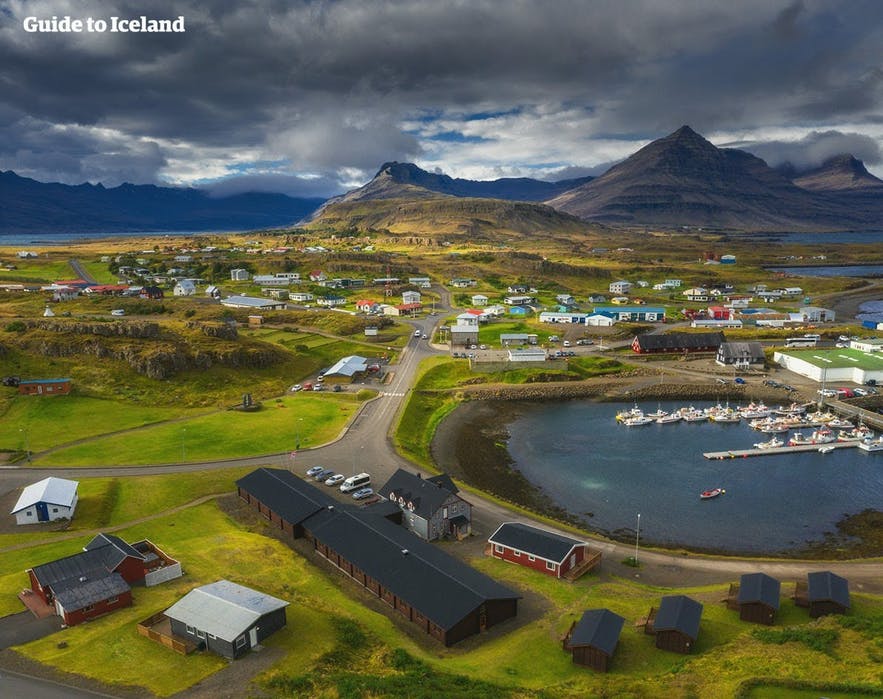
ฟยอร์ดทางตะวันออกของไอซ์แลนด์เป็นแนวชายฝั่งยาว 120 กิโลเมตร (75 ไมล์) จากเบรูฟยอร์ดูร์ในทางใต้ไปจนถึงหมู่บ้านชาวประมงเล็กๆ ชื่อบอร์การ์ฟยอร์ดูร์ เอสทรีในทางเหนือ
จากประชากรทั้งหมดของประเทศจำนวน 335,000 คน มีเพียงประมาณ 3.2% เท่านั้นที่อาศัยอยู่ในไอซ์แลนด์ตะวันออก ซึ่งคนในท้องถิ่นเรียกว่า "Austurland" หรือ "Austfirðir" บริเวณนี้ครอบคลุมพื้นที่ทั้งหมด 22,721 ตารางกิโลเมตร (8,773 ตารางไมล์) การสำรวจภูมิภาคนี้สามารถทำได้ด้วยทัวร์ชมฟยอร์ดตะวันออก หากคุณต้องการใช้เวลาท่องเที่ยวรอบๆ ภูมิภาคนี้ เป็นความคิดที่ดีที่จะจองโรงแรมในฟยอร์ดตะวันออกเพื่อใช้เป็นฐานในการสำรวจ
ทำไมคุณถึงวางใจในเนื้อหาของเราได้
Guide to Iceland คือแพลตฟอร์มท่องเที่ยวที่น่าเชื่อถือที่สุดในไอซ์แลนด์ ในแต่ละปี เราช่วยเหลือนักท่องเที่ยวหลายล้านคน เนื้อหาทั้งหมดของเราเขียนและตรวจสอบโดยผู้เชี่ยวชาญท้องถิ่นที่รู้จักไอซ์แลนด์อย่างลึกซึ้ง คุณจึงมั่นใจได้ว่าคำแนะนำด้านการท่องเที่ยวของเรามีความถูกต้อง ทันสมัย และเชื่อถือได้
ธรรมชาติในไอซ์แลนด์ตะวันออก
ไอซ์แลนด์ตะวันออกมีฟยอร์ดแคบๆ หลายแห่ง บริเวณนี้ล้อมรอบด้วยหน้าผาสูงชันซึ่งส่วนใหญ่จะมีหมู่บ้านชาวประมงตั้งอยู่
แม้ว่ามักถูกมองข้ามโดยผู้มาเยือน แต่ฟยอร์ดตะวันออกก็เป็นตัวแทนของสิ่งที่ดีที่สุดในประเทศไอซ์แลนด์ รวมถึงทิวทัศน์อันงดงาม หมู่บ้านชาวประมงที่อยู่ห่างไกล ทะเลสาบที่ส่องประกายระยิบระยับ ป่าทึบ และฟาร์มแบบดั้งเดิม
ภูมิภาคนี้มีสภาพอากาศที่มีแสงแดดมากที่สุดในประเทศ เช่นเดียวกับที่มีสัตว์ที่เป็นที่รู้จักและชื่นชอบมากที่สุดในประเทศไอซ์แลนด์
ภูมิภาคนี้มีชื่อเสียงเป็นพิเศษในเรื่องฝูงกวางเรนเดียร์ป่า และเป็นสถานที่แห่งเดียวในประเทศที่มีกวางเรนเดียร์อาศัยอยู่ โดยในตอนแรกกวางเหล่านี้ถูกนำเข้ามาเพื่อการเกษตรกรรม แต่พวกมันไม่ค่อยมีประโยชน์นัก และตั้งแต่นั้นเป็นต้นมาพวกกวางก็ได้รับอิสรภาพและถูกปล่อยให้อาศัยอย่างเสรี
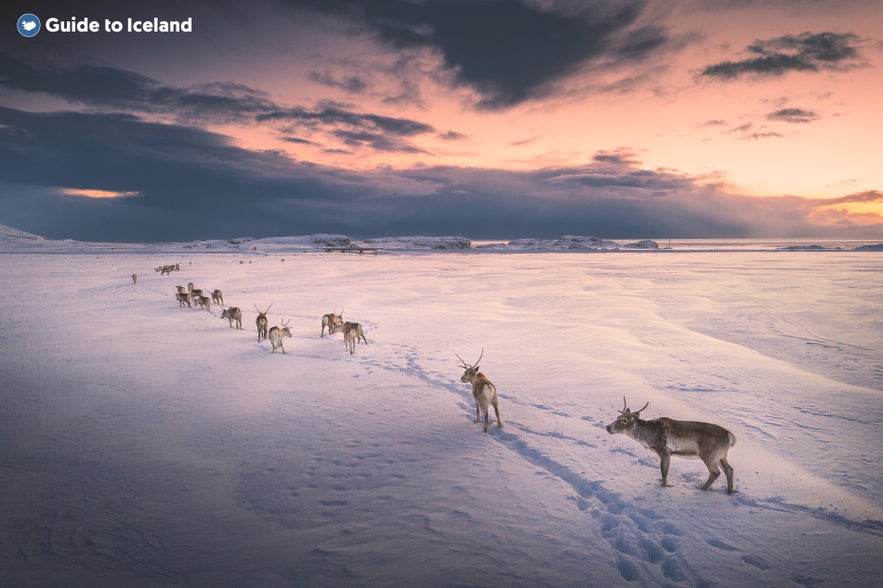 นกอพยพอาศัยอยู่ทั้งบนบกและบนหน้าผาในฤดูร้อน รวมถึงนกพัฟฟินที่เข้าใจยากด้วย
นกอพยพอาศัยอยู่ทั้งบนบกและบนหน้าผาในฤดูร้อน รวมถึงนกพัฟฟินที่เข้าใจยากด้วย
แม่น้ำหลายสายไหลผ่านเขตนี้ และบริเวณปากแม่น้ำมีอาณานิคมของแมวน้ำ น่านน้ำที่อุดมสมบูรณ์ยังทำให้มีอาหารสำหรับวาฬและโลมา ทำให้มองเห็นพวกมันได้แม้กระทั่งจากริมชายฝั่ง
ภูเขาสไนเฟลล์ (อย่าสับสนกับคาบสมุทรสไนแฟลซเนสทางตะวันตกของไอซ์แลนด์) คือยอดเขาที่สูงที่สุดในไอซ์แลนด์และตั้งอยู่ทางตะวันออก ใกล้กับที่นี่คือเอยาบักการ์ ซึ่งเป็นโอเอซิสบนไฮแลนด์และหนึ่งในสถานที่ที่มีห่านตีนสีชมพูมาทำรังมากที่สุดในโลก
วัทนาโจกุลเป็นธารน้ำแข็งที่ใหญ่ที่สุดในยุโรปที่ทอดยาวไปจนถึงชายแดนของไอซ์แลนด์ตะวันออก และมีขนาดใหญ่มากจนสามารถมองเห็นได้จากหลายแห่งทั่วทั้งภูมิภาค
แนวชายฝั่งอันตระการตาและความสันโดษอันเงียบสงบยังนำนักท่องเที่ยวมายังไอซ์แลนด์ตะวันออกอีกด้วย มันจะเป็นจุดแวะพักที่ดีเยี่ยมสำหรับการผจญภัยบนถนนวงแหวนของคุณ
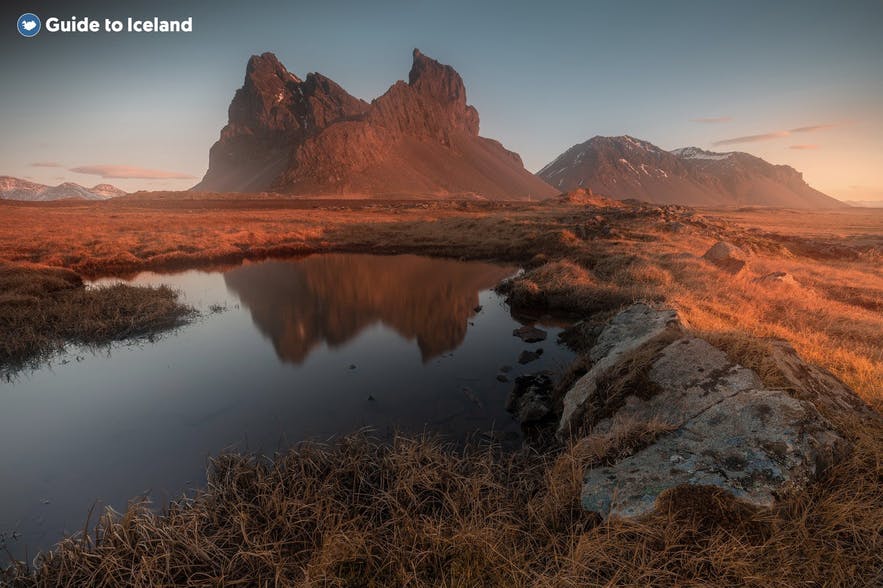
มีกิจกรรมให้ทำมากมายในฟยอร์ดตะวันออกของไอซ์แลนด์ หากคุณเพลิดเพลินกับการเดินเล่นท่ามกลางธรรมชาติ บอร์การ์ฟยอร์ดูร์ เอสทรี เป็นสวรรค์ของนักเดินป่า นิทานพื้นบ้านท้องถิ่นเล่าว่าบริเวณนี้เป็นที่อยู่ของเอลฟ์และ 'ฮิดเดนพีเพิล' ของไอซ์แลนด์
นอกจากนี้ยังมีการก่อตัวของหินบะซอลต์ที่น่าทึ่งในหุบเขาสตุดลากิล แม้ว่าหุบเขาแห่งนี้จะต้องมีการเดินป่าเพื่อไปถึงที่นั่น แต่ก็เป็นสถานที่ที่น่าอัศจรรย์อย่างแท้จริงสำหรับนักธรณีวิทยาและผู้รักธรรมชาติ
ทางตะวันออกของไอซ์แลนด์ยังเป็นที่ตั้งของน้ำตกที่สวยงามบางแห่ง เช่น น้ำตกลิทลาเนสฟอสส์ และน้ำตกเฮนกิฟอสส์
เอกิลสตาดิร์
ไอซ์แลนด์ตะวันออกมีเพียงไม่กี่เมืองที่มีบริการสำคัญๆ หนึ่งในนั้นคือเอกิลสตาดีร์ (Egilsstaðir) ซึ่งถือเป็นเมืองหลวงของภูมิภาคนี้
เอกิลสตาดีร์มีร้านอาหาร พิพิธภัณฑ์ ร้านค้า ปั๊มน้ำมัน และตัวเลือกที่พักมากมายที่เหมาะกับทุกงบประมาณ นอกจากนี้ยังเป็นที่ตั้งของสนามบิน ซึ่งหมายความว่าผู้ที่มีเวลาจำกัดหรือไม่มีใบขับขี่ก็สามารถเดินทางมาจากเรคยาวิกได้อย่างง่ายดาย
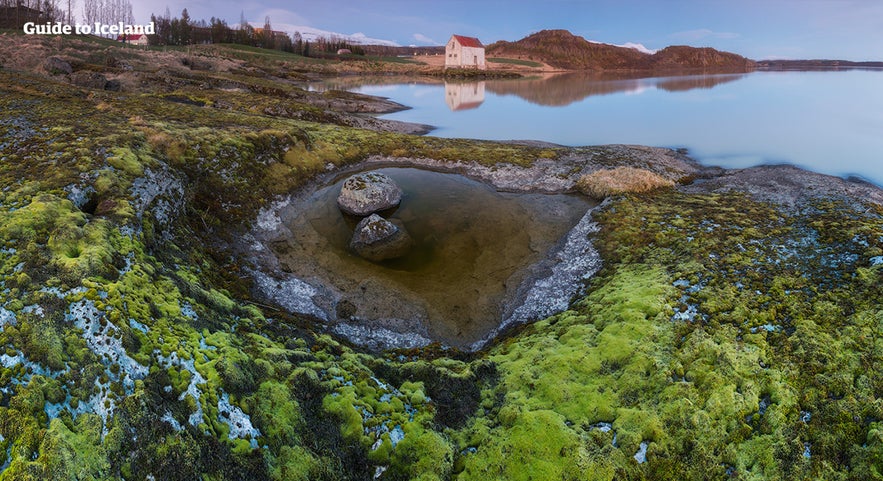
เมืองเล็กๆ อันงดงามทางตะวันออกของไอซ์แลนด์แห่งนี้มีชื่อเสียงด้วยเหตุผลหลายประการ กิจกรรมยอดนิยมใกล้เอกิลสตาดิร์ ได้แก่ การเดินป่า เยี่ยมชมสระว่ายน้ำหรือสปา (เวิกบาธส์เป็นสถานที่ที่มีความพิเศษ) เยี่ยมชมน้ำตก และสำรวจเมืองที่มีเสน่ห์แปลกตา นอกจากนี้ยังมีพิพิธภัณฑ์ Heritage ที่มีชื่อเสียง ซึ่งทำให้ผู้มาเยือนได้เข้าใจถึงชีวิตของชาวไอซ์แลนด์ตะวันออกในอดีต
พื้นที่นี้เต็มไปด้วยสถานที่สำคัญทางวัฒนธรรมที่น่าอัศจรรย์ เช่น ฮาลลอร์มสตาดาร์สโคกูร์ หรือป่าที่ใหญ่ที่สุดในประเทศ ซึ่งสามารถพบได้บนชายฝั่งตะวันออกของทะเลสาบลาการ์ฟโยลท์ ลองจ้องมองทะเลสาบใกล้ๆ แล้วคุณอาจเห็นสัตว์ประหลาดเวิร์มคล้ายหนอนอยู่ในน้ำ
ฮาลลอร์มสตาดาสโคกูร์ครอบคลุมพื้นที่ 740 เฮกตาร์ ประกอบด้วยต้นไม้กว่า 80 สายพันธุ์จากทั่วทุกมุมโลก อัตราการเติบโตนี้ช่างน่าประหลาดใจเมื่อพิจารณาว่าในปี 1910 ต้นไม้นี้เป็นเพียงต้นไม้กลุ่มเล็กๆ ในคอกที่ได้รับการคุ้มครอง
เอกิลสตาดิร์ยังมีเทศกาล Hringrás ซึ่งเป็นเทศกาลดนตรีอิเล็กทรอนิกส์ประจำปี มีเทศกาลเมือง Orsteiti และเทศกาลดนตรีแจ๊ส
หากต้องการสัมผัสถึงความผ่อนคลายมากขึ้น คุณสามารถไปแช่ตัวในสระว่ายน้ำที่เซลอร์เลยก์ใกล้กับบักกาฟยอร์ดูร์ก็ได้ สระว่ายน้ำล้อมรอบด้วยภูเขาและทิวทัศน์ที่สวยงามของฟยอร์ด และถือว่าเป็นหนึ่งในประสบการณ์ที่เป็นไอซ์แลนด์อย่างแท้จริงที่สุดในภูมิภาคนี้
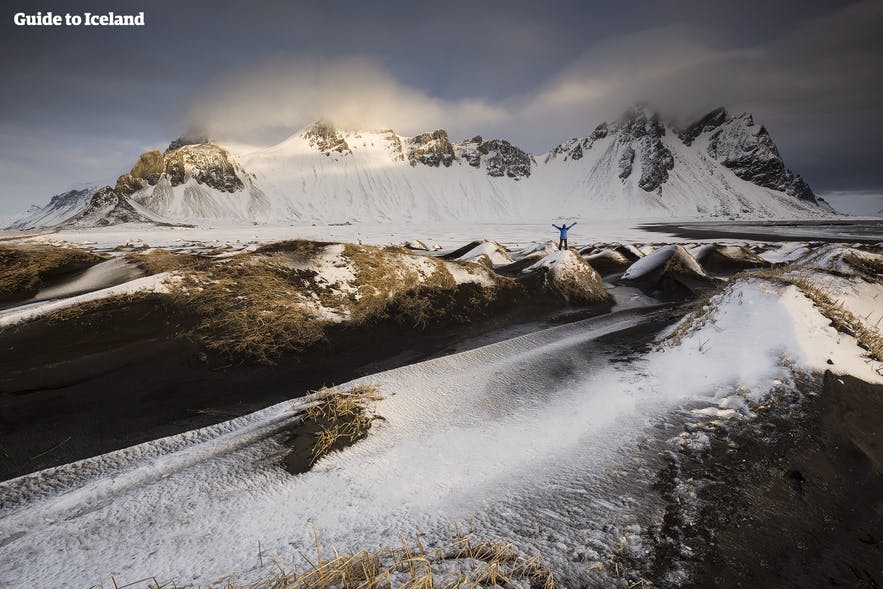
ในฟยอร์ดตะวันออกในฤดูหนาว คุณจะมีโอกาสที่ดีเยี่ยมในการชมแสงเหนือจากพื้นที่ห่างไกล เช่น เอกิลสตาดีร์ ซึ่งแน่นอนว่าต้องมีสภาพอากาศที่เอื้ออำนวยด้วย
เซย์ดิสฟยอร์ดูร์
ผู้ที่มาเยือนไอซ์แลนด์โดยเรือเฟอร์รี่จากยุโรปแผ่นดินใหญ่หรือหมู่เกาะแฟโรจะมาขึ้นฝั่งที่เซย์ดิสฟยอร์ดูร์ เมืองนี้มีประชากรเพียง 700 คน มีชื่อเสียงในด้านสถาปัตยกรรมไม้อันหรูหรา อิทธิพลของสแกนดิเนเวีย และอุตสาหกรรมการตกปลาแฮร์ริ่งที่มีคุณค่าทางประวัติศาสตร์ ไม้ส่วนใหญ่ที่ใช้ในการพัฒนาเซย์ดิสฟยอร์ดูร์เป็นไม้สำเร็จรูปที่ถูกส่งมาจากนอร์เวย์ในศตวรรษที่ 18
ในใจกลางเมืองมีถนนที่ทาสีรุ้งซึ่งนำไปสู่โบสถ์สีน้ำเงินอันโด่งดัง
เซย์ดิสฟยอร์ดูร์ล้อมรอบไปด้วยน้ำตกที่ไหลแรง ภูเขายอดราบ และเส้นทางเดินป่าอันเงียบสงบ พร้อมด้วยทัศนียภาพอันงดงามเหนือฟยอร์ดที่อยู่ติดกัน
กิจกรรมอื่นๆ ที่มีให้บริการจากเซย์ดิสฟยอร์ดูร์หรือบริเวณใกล้เคียง ได้แก่ การดำน้ำลึก เล่นสกี การตกปลาทะเล เล่นร่มร่อน และการขี่ม้า นอกจากนี้ยังมีนิทรรศการทางวัฒนธรรมอีกมากมายให้เยี่ยมชม ซึ่งรวมถึงพิพิธภัณฑ์โรงไฟฟ้าฟยาร์ดาร์เซลและศูนย์ทัศนศิลป์สกัฟเฟลล์
ฟาสครูดสฟยอร์ดูร์
ฟาสครูดสฟยอร์ดูร์เป็นหมู่บ้านที่มีประชากรเพียง 700 คน ตั้งอยู่ใจกลางฟยอร์ดตะวันออกและมีวัฒนธรรมที่แตกต่างเป็นของตัวเอง
ผู้ตั้งถิ่นฐานกลุ่มแรกเป็นชาวประมงจากฝรั่งเศส และมรดกของพวกเขายังคงอยู่ในเมืองเล็กๆ แห่งนี้ ชาวประมงฝรั่งเศสมาถึงครั้งแรกในช่วงกลางปี 1800 และได้สร้างบ้าน โรงพยาบาล และท่าเรือขึ้นมา ซึ่งพวกเขาถือว่าทั้งหมดเป็นสิ่งจำเป็นสำหรับการใช้เวลาในไอซ์แลนด์
ดูเหมือนว่าพวกเขาได้ตั้งถิ่นฐานอยู่ในหมู่บ้านเล็กๆ ริมชายฝั่งแห่งนี้แล้ว อย่างไรก็ตาม ในช่วงสงครามโลกครั้งที่หนึ่ง ชาวฝรั่งเศสจำนวนมากถูกเรียกให้กลับบ้านเกิดเพื่อไปปฏิบัติหน้าที่ในการป้องกันประเทศ และในไม่ช้าเมืองนี้ก็ร้างผู้คน แต่ทว่า มรดกของพวกเขายังคงเหลืออยู่
คุณสามารถไปเยี่ยมชมโรงพยาบาลฝรั่งเศสเพื่อเรียนรู้เรื่องราวทั้งหมดของผู้ตั้งถิ่นฐานชาวฝรั่งเศสเหล่านี้ได้ เนื่องจากโรงพยาบาลเพิ่งได้รับการปรับปรุงใหม่และตั้งเป็นโรงแรมและพิพิธภัณฑ์
เพื่อเป็นการยกย่องบรรพบุรุษผู้ก่อร่างสร้างหมู่บ้าน ป้ายต่างๆ ในเมืองนี้ จึงมีทั้งภาษาไอซ์แลนด์และภาษาฝรั่งเศส นอกจากนี้เมืองนี้ยังมีความเชื่อมโยงกับเมืองในฝรั่งเศสที่ชื่อ Gravelines
โดยที่เมืองดังกล่าวมีการจัดงานปาร์ตี้สองครั้งทุกปี เพื่อเฉลิมฉลองความสัมพันธ์ของพวกเขากับไอซ์แลนด์ ครั้งแรกคือในฤดูใบไม้ผลิที่ชาวประมงจะออกเดินทางไปหาปลาในประเทศไอซ์แลนด์ ครั้งที่สองในฤดูใบไม้ร่วง ขณะที่คนเหล่านี้เดินทางกลับชายฝั่งฝรั่งเศส
ในเมืองฟาสครูดสฟยอร์ดูร์ ชาวบ้านจะเฉลิมฉลองความเชื่อมโยงกับฝรั่งเศสในช่วงฤดูร้อน เดือนกรกฎาคมเป็นฤดูตกปลาที่มีนักท่องเที่ยวมากที่สุด ดังนั้นการเฉลิมฉลองจึงมักเกิดขึ้นพร้อมๆ กัน
สำหรับนักตกปลาที่มาเยือนบริเวณนี้ สามารถไปตกปลาได้ในแม่น้ำดาลเซาที่อยู่ใกล้เคียง
นักท่องเที่ยวควรเดินไฮกิ้งไปตามเส้นทางเลียบแม่น้ำจิลเซา เพื่อไปยังน้ำตกจิลเซาร์ฟอสส์ ซึ่งพวกเขาสามารถเดินไปหลังม่านน้ำตกได้
เบรด์ดาลสวิก
เบร์ดดาลสวิก ตั้งอยู่ทางใต้ของฟาสครูดสฟยอร์ดูร์และเป็นหมู่บ้านเล็กๆ ที่มีประชากรเพียง 140 คน ที่นี่เป็นสถานที่ที่ดีเยี่ยมสำหรับผู้ที่ชื่นชอบการเดินป่า และเป็นจุดที่ดีเยี่ยมในการมองหากวางเรนเดียร์ป่า ซึ่งมักเดินเตร่อยู่ในบริเวณใกล้เคียง
นักท่องเที่ยวยังสามารถเพลิดเพลินกับหาดทรายสีดำของหมู่บ้านชาวประมงเบรด์ดาลสวิกที่มีเสน่ห์ และยังสามารถขับรถไปยังหุบเขาที่ยาวที่สุดและกว้างที่สุดในไอซ์แลนด์ที่เบรด์ดาลูร์ได้
เกาะพาพเอย์
พาพเอย์ หรือ Papey (หรือ “Friar’s Island”) เป็นเกาะที่ไม่มีคนอาศัยอยู่ และอยู่นอกชายฝั่งตะวันออกของไอซ์แลนด์ เกาะนี้มีพื้นที่ประมาณ 2 ตารางกิโลเมตร (0.8 ตารางไมล์) จุดสูงสุดอยู่ที่ 58 เมตร (190 ฟุต) เหนือระดับน้ำทะเล ทริปล่องเรือไปยังพาพเอย์จะออกเดินทางทุกฤดูร้อนจากดยูปิโวกูร์
เกาะนี้ตั้งชื่อตามพระสงฆ์เกลิค (“The Papar”) เชื่อกันว่าพระเหล่านี้เคยอาศัยอยู่บนเกาะนี้มานานก่อนการตั้งถิ่นฐานของชาวนอร์ส พาพเอย์เคยมีคนอยู่อาศัยมาตั้งแต่ศตวรรษที่ 10 จนถึงปี 1966 เมื่อชาวเกาะได้ย้ายเข้ามาอยู่บนแผ่นดินใหญ่ในที่สุด
เป็นเวลาหลายศตวรรษแล้วที่คนในพาพเอย์หาเลี้ยงชีพด้วยการตกปลาฉลาม ล่าแมวน้ำและนกพัฟฟิน และดูแลฟาร์มของพวกเขา ช่วงหลังๆ ชาวบ้านเริ่มมีการเก็บเกี่ยวขนเป็ดไอเดอร์ที่อาศัยอยู่บนเกาะด้วย
ปัจจุบัน ผู้มาเยือนพาพเอย์สามารถเพลิดเพลินกับอาณานิคมนกพัฟฟินขนาดใหญ่ที่ยังคงอาศัยอยู่บนเกาะได้ การได้เห็นซากของชุมชนในอดีต เช่น ประภาคาร โบสถ์ และสถานีตรวจอากาศก็น่าสนใจเช่นกัน ทั้งหมดนี้ยังคงดำรงอยู่เหมือนเช่นในปี 1966
วัฒนธรรมของไอซ์แลนด์ตะวันออก
จุดศูนย์กลางของวัฒนธรรมในภาคตะวันออกอีกแห่งหนึ่งคือศูนย์วัฒนธรรมและประวัติศาสตร์สคริดูคลอสตูร์ในเขตฟยอทสดาลสเชราด ในยุคกลาง มีอารามแห่งหนึ่งตั้งตระหง่านอยู่ในบริเวณนี้ จากนั้นเป็นต้นมาก็กลายเป็นศูนย์กลางทางศาสนาของภูมิภาค ในศตวรรษที่ 20 กุนนาร์ กุนนาร์สสัน นักเขียนชาวไอซ์แลนด์ได้มาอาศัยอยู่ที่นี่
กุนนาร์เขียนผลงานชิ้นเอกมากมาย เช่น Aðventa (The Good Shepherd), Svartfugl (The Black Cliffs) และ Saga Borgaraettarinnar (The Saga of the One-Eyed Guest) นอกจากนี้เขายังเขียนนวนิยายอัตชีวประวัติ Fjallkirkjan ซึ่งได้รับการแปลชื่อแตกต่างกันออกไปมากมาย รวมถึง The Church on the Mountain, Ships in the Sky และ The Night and the Dream
ในปัจจุบันนี้ งานเทศกาลมีบทบาทสำคัญในวัฒนธรรมตะวันออก เซย์ดิสฟยอร์ดูร์เป็นเจ้าภาพจัดเทศกาลดนตรีประจำปี LungA และชุมชนเนสกุปสตาดูร์ยังเป็นเจ้าภาพจัดเทศกาลประจำปีที่ได้รับความนิยมอย่างสูงสองเทศกาล ได้แก่ Neistaflug และ Eistnaflug
ไอซ์แลนด์ตะวันออกยังเป็นที่ตั้งของโรงไฟฟ้าพลังน้ำเคาราฮ์นูคาร์ ซึ่งเป็นแหล่งพลังงานให้กับหลายเมือง การก่อสร้างสิ่งนี้นำไปสู่การถกเถียงกันอย่างดุเดือดเกี่ยวกับรอยเท้าทางนิเวศน์ของไอซ์แลนด์ ซึ่งการถกเถียงนั้นยังคงดำเนินมาถึงทุกวันนี้









